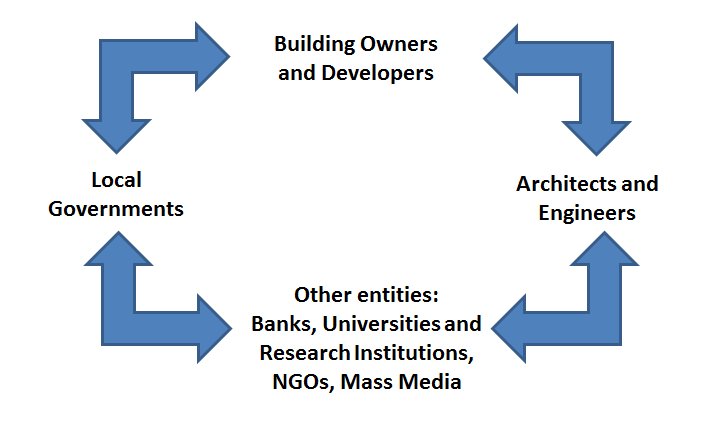
Facilitating Decision-Making for
Sustainability in the Building and Construction Sector
| Hari Srinivas | |
| Management Tools Series E-005. June 2015 |

|
The Sustainable Development Goals (SDGs) [ 1 ] were initiated in late 2015, spurring global attention on incorporating sustainability in all our actions from global to local.
In its entirety, SDGs present a significant opportunity to move towards sustainability and live within the means and resources available to us [ 2 ].
The reduction of greehouse gases (GHGs) and issues associated with climate change is a part of this move towards sustainability. This particular challenge has become central to a number of global initiatives and multilateral environmental agreements [ 3 ], especially the UN Framework Convention on Climate Change (UNFCC).
As we spend more than 90% of our time indoors [ 4 ], whether at work or at home, buildings have emerged as a key sector to support the SDGs and change our lifestyles and consumption patterns towards sustainability.
| Why buildings? | |||
|
Buildings form a key component of cities.
Cities:
|
The processes involved in a building's lifespan - conceptualization, design, construction, use, maintenance and demolition - have immense implications for the GHGs produced in terms of resources and energy consumption. Building and construction processes can be subject to the principles of sustainability, and help reduce the risks of climate change.
What would this mean to local governments? What are the key elements of a sustainable building and construction policy? What policies and programmes are needed to ensure the success of such a policy? Who needs to be involved - up and down the supply chain, besides local governments themselves?
Incorporating sustainability principles in the building and construction sector is critical, but the decision-making process is fraught with mind-sets that resist the change towards making the sector more sustainable.
There are a number of reasons that are used by building owners, developers and architects/engineers to resist change and switch towards sustainability in the building and construction sector, particularly in developing countries and emerging economies.

Multistakeholder Partnerships for Sustainability
in the Building and Construction Sector
The following table illustrates some of these common "reasons" and the strategies that we can use to change such mind-sets and decision-making processes.
| Common reasons for lack of action | Strategies for change in decision-making processes |
|
"It’s too expensive ... " - Owners and Developers
|
|
|
"One person (or one building) cannot make a difference! ... " - Owners and Developers
|
|
|
"Banks and clients always focus on bottom lines and high profits ... " - Banks, owners, developers
|
|
|
"Building codes (functional efficiency, comfort) are not favourable towards sustainable buildings and construction ... " - Architects
|
|
|
"Professional ethics is very weak, so implementing SBC is difficult ... " - Architects
|
|
|
"Each stakeholder pursues his/her own goals, ignoring others ... " - Local Governments
|
|
|
"Social development is more important than environmental issues ... " - Local Governments
|
|
|
"I don't benefit from making this building easily disassembled ... " - Architects and Developers
|
|
Ultimately, the contribution of the building and construction sector in our move to sustainability [ 7 ] is huge - both due to the size of the sector itself, and the role it plays in the key sustainability strategy, namely changing our lifestyles and consumption patterns (that take place within buildings).
[1] See GDRC's SDG Dashboard for more information on the latest news and trends.[Return to body text]
[2] This issue is well illustrated by the concept of "ecological footprint," defined as the land area needed to provide the food and other resources each of us consume, and absorb the wastes/emissions we throw away. See GDRC's feature on ecological footprints [Return to body text]
[3] There are more than 200 such multilateral environmental agreements (MEAs) signed between national governments to solve global problems. See GDRC's Repository on MEAs [Return to body text]
[4] Source: European Commission Joint Research Center - Science Hub (EC JRC) [Return to body text]
[5] For further details, please see GDRC's feature on Cities, EMS and Everything [Return to body text]
[6]For more information on ISO - the International Standards Organization, please see http://www.iso.org/ [Return to body text]
[7] See GDRC's section on green construction in its Urban Environmental Management programme. [Return to body text]
|
on |
| Environmental Decision-Making Contact:
|
